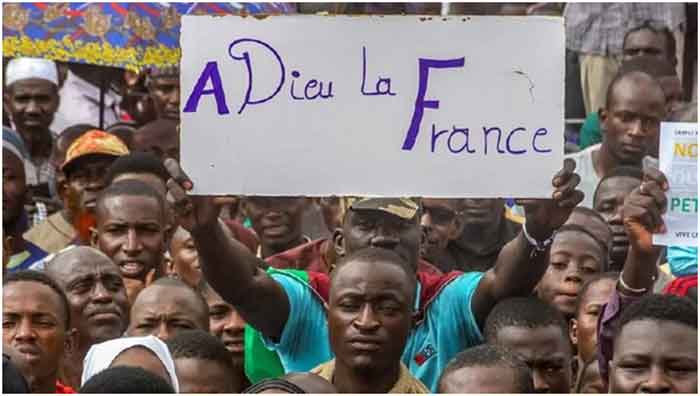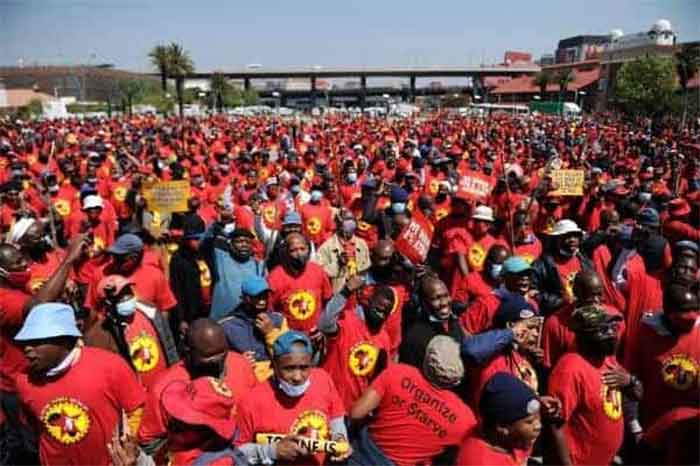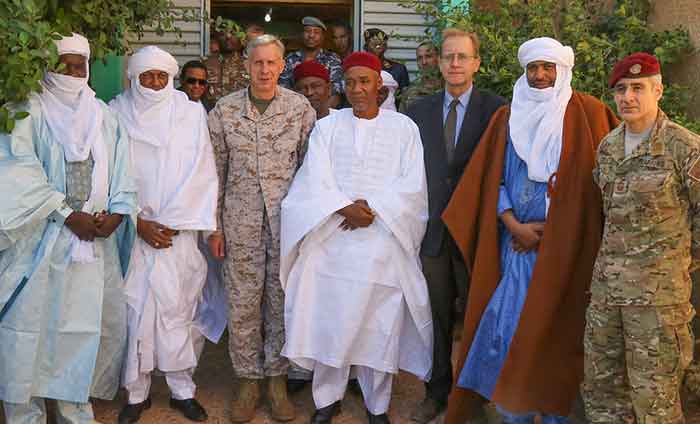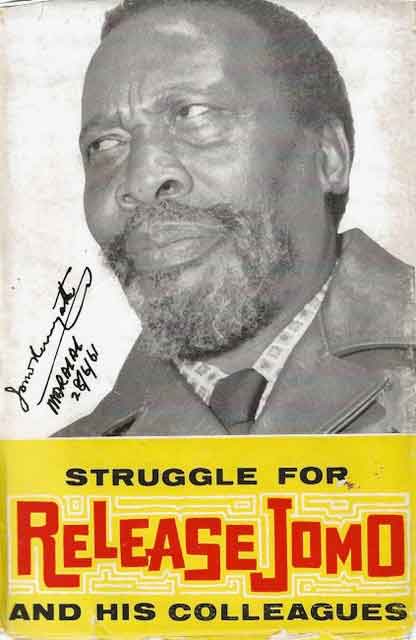
Image the situation in Kenya in the 1930s. The most powerful imperialist country in the world was in total control of land, life and future of the country. Not only in Kenya, not only in Africa but in a large part of the world. Every nationality in the country had opposed the invaders but none succeeded in stopping them. Thousands were killed and massacred by the cruel forces of capitalism and imperialism set on increasing their wealth and power at whatever cost — to others. If thousands had to be massacred, so be it, their ideology proclaimed. The end justified the means. They captured people’s land and claimed it as their own. They captured power over life and death of millions in their quest for global wealth for the ruling classes.
There was no power that could stop them. Their industry could manufacture the deadliest weapons ever invented on earth. Gunpowder, guns, bombs and their delivery system of deadly aircrafts and tanks ensured that people’s resistance failed. Yes, people did resist — with whatever weapons they had.
People resisted. They formed nationality- and-regional organisations to unite people in and continued to fight, now not based on nationalities, but on a united force of people. Yet they had no political power to strengthen their organisations. Colonial laws and police put an end to even this resistance.
And then the invading hordes came up with an even deadlier weapon: divide and rule. Use the victims to suppress the victims. Thus, were born the homeguards, the compradors dead set on defeating their own family and friends for the pittance of a bribe from the invaders. The game was lost for the cause of people. Or so thought the invaders.
They had not reckoned with the new force that had grown up through their own actions. Capitalism, that the invaders used to defeat people, also gave birth to the class that could confront the all-powerful colonialists: working class which was, by its very definition, opposed to the capitalists and their ideology of class exploitation and oppression. But by the mere existence of a class opposed to colonialism, capitalism and imperialism was not going to be dislodged from power. Something more was needed. Workers needed to acquire class consciousness before they could be an effective fighting force against the exploiting class. Workers needed to be organised to be able to withstand the daily blows from capitalism. Workers needed the ideology that could unite them to oppose the powerful enemy.
The experience from other countries resisting colonialism and capitalism was what became a game changer. Colonialism did not only introduce class divisions in the country; they also imported the experience and the ideology of resistance from other colonies. The working class that were brought by the British from India came, not only with the skills that the colonialists wanted to exploit and increase their wealth. They also came with the experience, the organisation and the ideology of resistance that proclaimed that it was the duty of the oppressed to oppose the oppressor; that it was possible to defeat the greatest force on earth. The working class in India had shown that power was theirs so long as they were guided by a correct ideology — socialism and communism — led by working class, organised in trade unions and saw through the dividing policies of capitalism. And that was the lesson that came to Kenya.
First came the forces of the Ghadar Party. Their work is discussed further in Durrani (2006, p.42):
Lala Hardayal pointed out that the Ghadar Party policy was for equality of all people, that there was no room for the rich to exploit the workers. “The rich will always rule the poor… without economic equality, fraternity is only a dream” he declared. This background of the Ghadar Party and the movement throughout the world shows how important it was in arousing anti-imperialist feeling among people around the world. It also explains why the British colonial authorities reacted so severely when they uncovered the Ghadar movement in Kenya.
The Ghadar Party was active in Kenya too, among many countries around the world. Never Be Silent (p.42) takes up its story in Kenya:
One of the leaders of the Ghadar movement in East Africa was Sitaram Acharia. In this capacity, he regularly kept contact with the revolutionary movement in Europe and circulated revolutionary and anti-imperialist material among the movement’s supporters in East Africa. A British military officer recognised him as “the brains and the moving spirit of the whole of the anti-British movement in East Africa.”
… In 1915, Sitaram was fortunate to be merely deported. Other workers in the Ghadar movement were given much more brutal treatment. Chandan (2004) records that “three Punjabis, Bishan Singh of Jalandar, Ganesh Das and Yog Raj Bali of Rawalpindi were sentenced to death in Mombasa in December 1915 charged, among other things, for possessing and distributing the Ghadar Party newspaper Ghadar. By May 1916, some were court marshalled; eight of them were imprisoned for terms ranging from six months to fourteen years. Three others were shot and two were hanged. Charges against them included “possessing seditious publications, assisting the enemy, and spreading false intelligence and alarmist reports.”
In December 1915, Keshavlal Dwivedi, Chief Clerk in the High Court, was sentenced to death by hanging for having in his house two letters from Sitaram Acharia, and a collection of “seditious” newspaper clippings. L.M. Savle, another active organiser, was sentenced to death for the same “offence” as that of Dwivedi.
An important Ghadar activist in Kenya was Gopal Singh. The Ghadar Party was reorganised in India in 1915 when branches in many countries were re-established. According to Chandan, “between the two World Wars, Kenya became an underground conduit of the Ghadar/Kirti with Gopal Singh as one of its chief protagonists becoming a middleman for many revolutionaries en route to Moscow”. Gopal Singh, with his “progressive ideas and association with freedom struggle of East Africa”, was active in Sikh institutions in Kenya. The leadership of Singh Sabha in Nairobi, which included Gopal Singh, acted as “a front organisation for the secular Ghadar/Kirti Party”. (p.43).
The significance of the Kenyan connection with the Ghadar movement was that it connected progressive forces with Marxism and experiences of the Soviet Union. This connection was strengthened by links with the Communist Party of India with many Kenyan progressive people linking with the struggle in India.
The British authorities took a very serious view of the activities of the Ghadar movement, not only in Kenya, but throughout the world. It saw the movement threatening the British Empire which Lala Hardayal had once described as the “British Vampire”. As for the Ghadar activists in Kenya, it was clear that they were deeply influenced by the anti-imperialist ideology and organisational principles of the Ghadar movement. They also learnt valuable lessons on the importance of appropriate forms and contents of publications as tools in their struggle. These lessons became part of the growing experience in the communication field in the country.
The organisational experience, the ideology and activities of the Ghadar movement had a lasting impact on the future development of Kenya. The battle was then taken up by many Kenyans who were active in India as class and nationalist organisers. Makhan Singh[1] was a member of the Indian Communist Party and edited its newspapers for many years before he was detained by the British Indian government. Pio Gama Pinto[2] was a active in the liberation of Goa from Portuguese colonialism. Both of them were to play an important part in the working class and anti-colonialist struggles in Kenya. What then was the secret of their success? Two aspects were crucial: ideology and organisation. They were clear about their class position and wanted equality and justice — which only socialism could provide. They were also active in the trade union movement which then joined hands with the Mau Mau movement and provided the ideological, working-class consciousness to it. Without this input the struggle for independence and against capitalism and imperialism in Kenya would have been even more difficult.
But what about now? Neo-colonialism has taken total control over the country. Organisations which sought socialism have been suppressed violently. People’s movements and demonstrations are suppressed, and the police have a free hand in killing and maiming anybody resisting the ‘elected dictatorship’, particularly the youth. Makhan Singh was side-lined by the comprador class after independence; Pio Gama Pinto was assassinated, so fearful are the new rulers of the lessons that they set. Okakah Onyango (unpublished) sums up the current situation in Kenya succulently:
Kenya is on a nosedive towards barbarism… After three decades, eight elections, three presidents and a new 2010 constitution later, Kenyan government is hastily returning to its dark legacy of impunity against its people, violation constitutionalism, and silencing voices condemning the backward policies…Opposing groups and activists were recently labelled terrorists, saboteurs and anti-unity by the State. Killing, inhumane torture and unlawful arrests have been the order of the day during this Sabasaba period. Attacks on our centers of organizing and abduction of pro-democracy and community organizers have been on the rise under the emerging dictatorial tendencies of the state. Patriots continue to suffer as the Kenya kwanza regime systematically undermines and disregards basic human rights. The return of ethnic clashes in Sondu, a border town located between the Kalenjin tribe and the Luo people is reminiscent of the repression in the Moi dictatorship era. The executive has been on record congratulating the state approved war against the people as a ‘good job’. Now we witness State officers kissing up to the executive, hopefully to impress their master and get promotions. Directives made by the interior ministry not to document people killed in protests and the blatant claim by the police boss that there has been hiring of dead bodies to lay false claims against the state continues to embolden the rogue police force.
Onyango sees the action needed:
This violence must be stopped, not sometime later in the future, but now. The anti-people stance imposed by the executive through interference and manipulation of government functions; and protection of corruption has to end. Can we give up our democratic gains had fought for years? No, those who value the interests of the Motherland cannot sit back and stay composed as our people’s destiny is hanged in favor of foreign interests. It’s our duty to stand on guard and act swiftly against the silencing of workers, peasants, community organizers and patriotic intellectuals. We have a task to prevent the ruthless neocolonial state from using torture as a weapon against the people. With pain in our hearts, we must not succumb to intimidation, we must not be careless in confronting enemies of progress. As revolutionary socialists we must focus our efforts to the needs of the masses and fortify our lines of defence against the imperialist attack.
Yes, Rogers see the future clearly: ‘act swiftly against the silencing of workers, peasants, community organizers and patriotic intellectuals’. Yet there are no national or regional organisations that can take up the challenge. KPU had been killed. December Twelve Movement and MWAKENYA are in the past. National attention has been driven by the ruling class and media to parliamentary politics as the salvation to the problems that working class faces. But they are all part of the capitalist establishment and can offer no real hope. The word ‘socialism’ is hardly heard in today’s Kenya.
But not all is lost. There is a force that can play its historical role in people’s struggles today. It is passive at present, but it has the potential to wake up and roar its presence in the struggle against capitalism and its ally, imperialism. It is a national force with presence in every community, in every region, in every house. It has the resources and the working-class ideology to guide it, as it did under the East African Trade Union Congress, as it did when it joined hands with Mau Mau. It needs to be re-activated. That is why the need for raising class consciousness, to energise and politicise trade unions and activists is the way ahead. That is why the on-line Course on Trade Unions, Class and Power run by Ukombozi Library is so important. Nothing to lose, but the chains, is still true.
Shiraz Durrani is a Kenyan political exile living in London. He has worked at the University of Nairobi as well as various public libraries in Britain where he also lectured at the London Metropolitan University. Shiraz has written many articles and addressed conferences on aspects of Kenyan history and on politics of information in the context of colonialism and imperialism. His books include Kenya’s War of Independence: Mau Mau and its Legacy of Resistance to Colonialism and Imperialism, 1948-1990 (2018, Vita Books). He has also edited Makhan Singh – A Revolutionary Kenyan Trade Unionist (2017, Vita Books) and Pio Gama Pinto: Kenya’s Unsung Martyr,1927 – 1965 (2018, Vita Books). He is a co-editor of The Kenya Socialist. and edited Essays on Pan-Africanism (2022, Vita Books, Nairobi). His latest book (2023) is Two Paths Ahead: The Ideological Struggle between Capitalism and Socialism in Kenya, 1960-1990. Some of his articles are available at https://durranishiraz.academia.edu/research and books at: https://www.africanbookscollective.com/search-results?form.keywords=Shiraz+Durrani
References
Chandan, Amarjit. (2004): Gopal Singh Chandan; a short biography and memoirs. (Punjabi Diaspora series no. 4). Jalandar: Punjab Centre for Migration Studies.
Durrani, Shiraz (2006): Never Be Silent: Publishing and Imperialism in Kenya, 1984-1963. Nairobi: Vita Books.
Durrani, Shiraz (2015): Reflections on the Revolutionary Legacy of Makhan Singh. in: Makhan Singh, A Revolutionary Kenyan Trade Unionist. Ed. Shiraz Durrani. Nairobi: Vita Books.
Durrani, Shiraz (2018): Pio Gama Pinto Lived and Died for Revolutionary Change. in: Pio Gama Pinto, Kenya’s Unsung Martyr 1927 – 1965. Edited by Shiraz Durrani.
Onyango, Okakah (Forthcoming): Kenya’s Slide Towards Barbarism: Unravelling the SabaSaba Legacy.















































